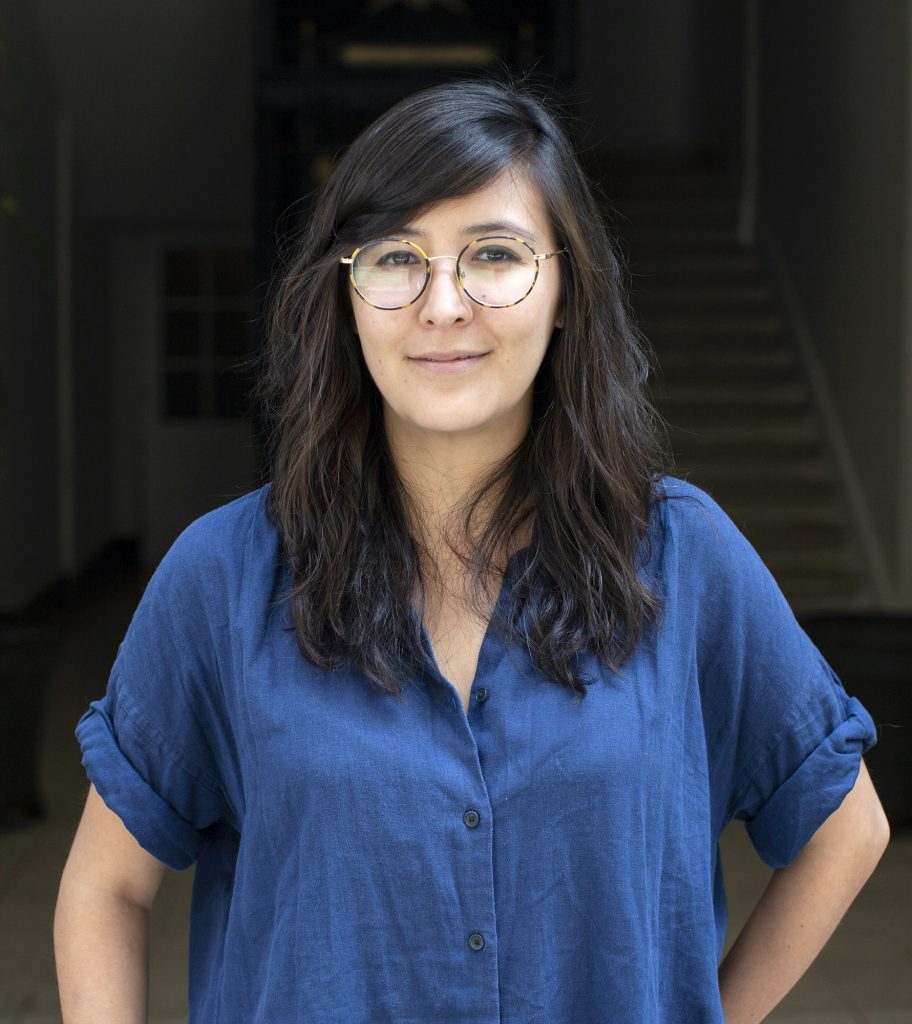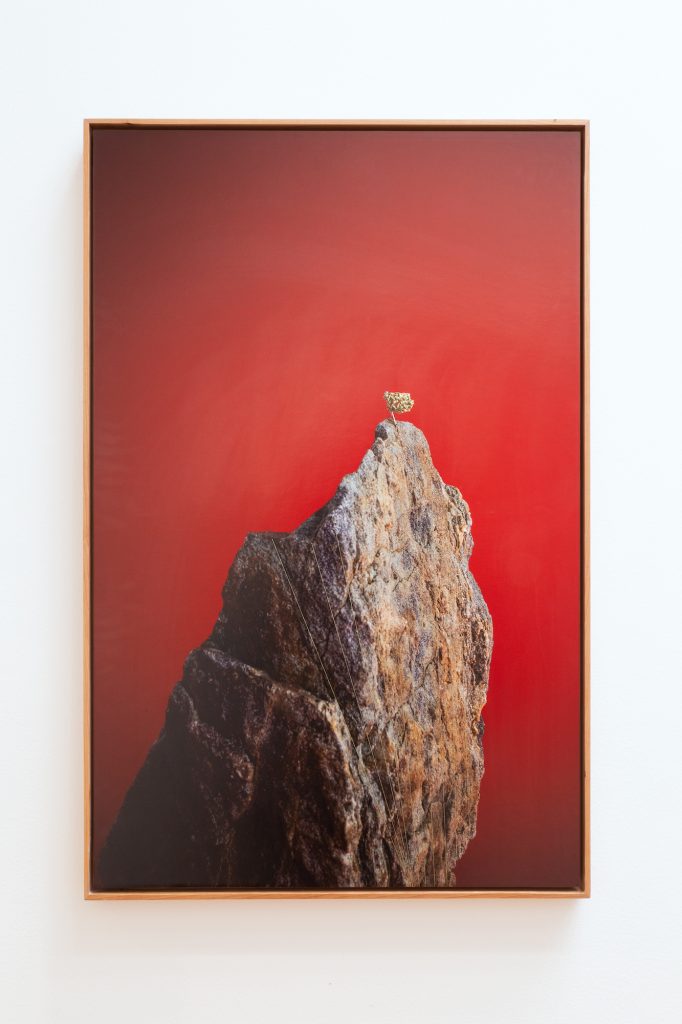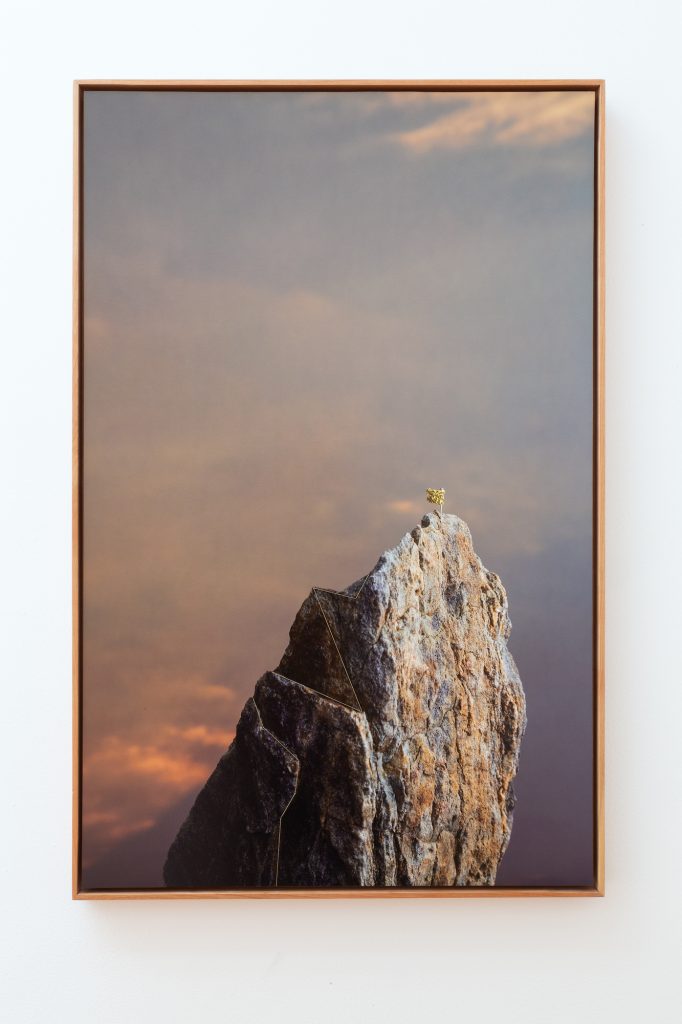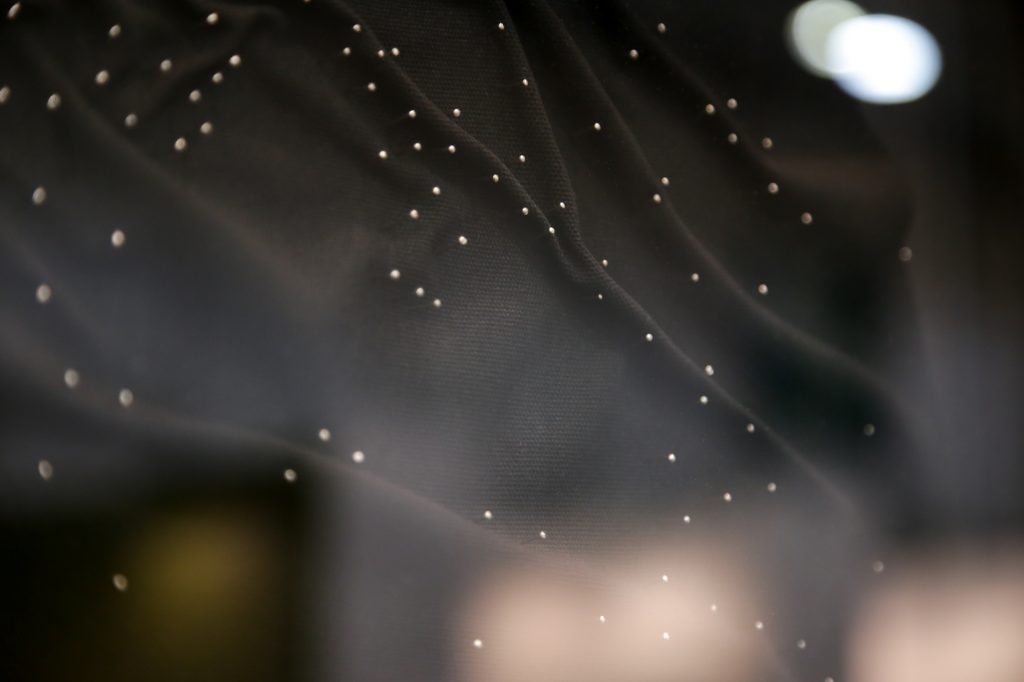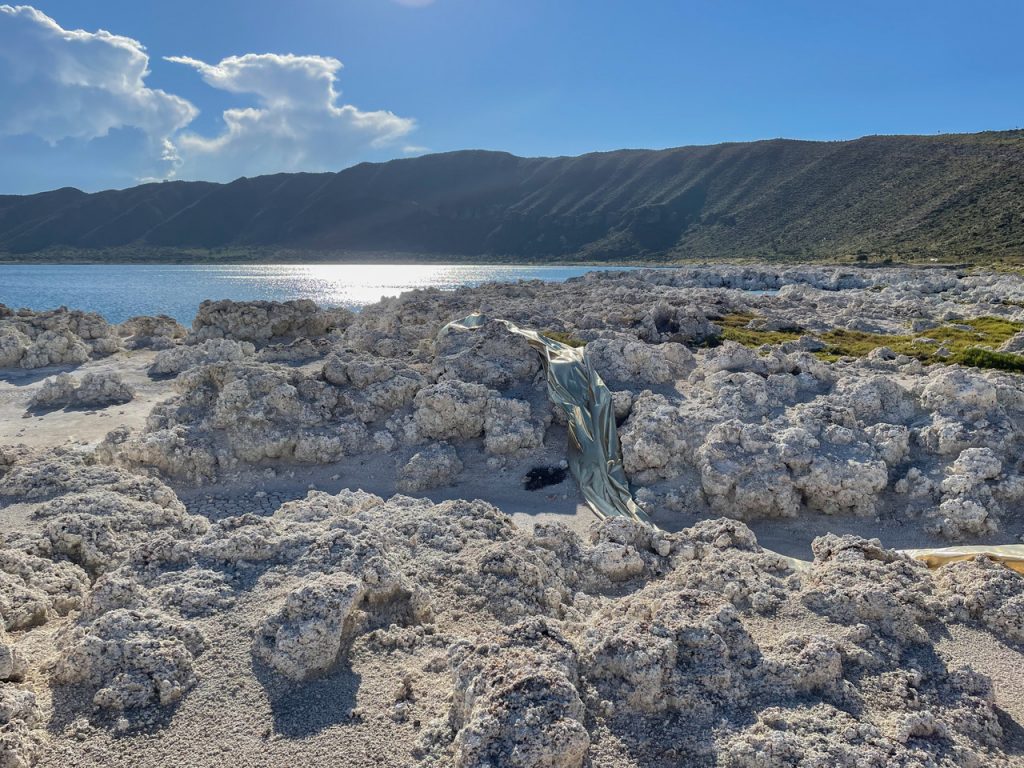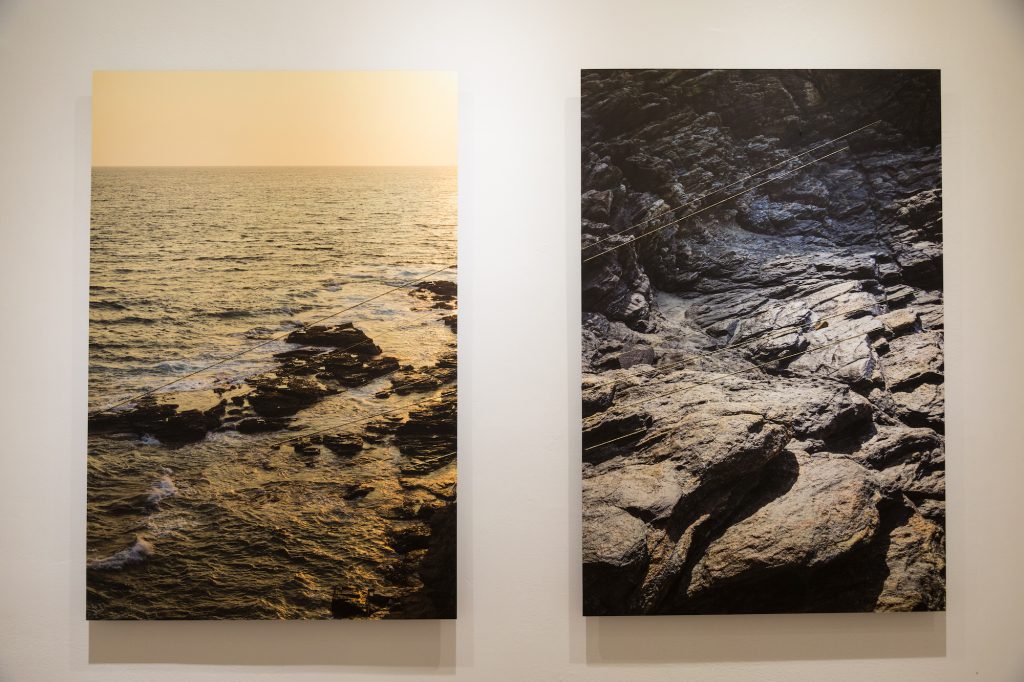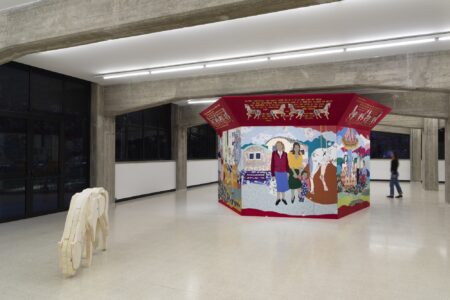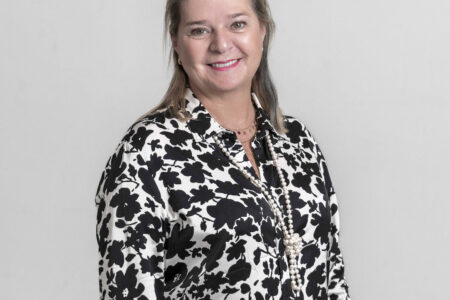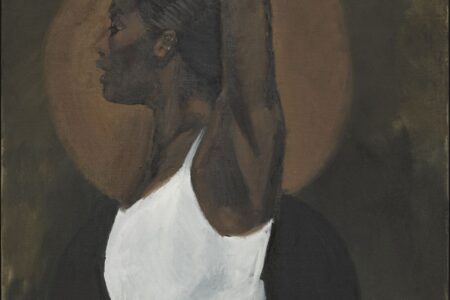Sumie García Hirata: A Different Landscape
TLmag spoke to Mexico-based artist Sumie Garcia Hirata in April 2022, as she prepared for her spring show with ammann//projects. This interview was originally published in our S/S 2022 issue: TLmag37: State of Gold.
As a filmmaker, photographer and visual artist, Sumie García Hirata mines cultural and physical landscapes, both her heritage as a 3rd generation Japanese-Mexican but also the ancient rocks and jagged landscapes of Mexico that hold millennia of history. Blending fact and fiction through layered imagery often pierced by gold threads, Sumie García’s work is infused with a mysterious aura, at once romantic but also quite spiritual.
TLmag: Gold appears in your work in various ways – visually – as with golden light on the water, tactile – through threads and chains, symbolic – as rays of light or connection… What does this material / colour / symbol mean to you as an artist?
Sumie García: Gold feels like a glitch in nature to me. It is much too bright, ephemeral and intangible within our physical world. Within my work, gold has come to represent that rupture within reality, the invisible ties and faults in our world made visible. Through its reflections in photographs and string, I aim to capture passing moments in time; within the gallery space, the string reacts to the lighting and the way each viewer stands in front of the work. Gold’s various symbols and meanings of ritual, transcendence, value and the sublime, both layer and unite each piece.
TLmag: You were born in Mexico with Japanese descent; how do these two culturally rich heritages influence your creative practice? Both countries have deep connections with gold – from the Mexican churches and Aztecs to Japanese Kintsugi and the symbol of the sun….
S.G.: Growing up I wasn’t fully aware of the deep influence of my heritage in my life and practice. Even though I am from Mexico City and feel completely connected to it, I grew up in a building with my Japanese grandparents. The presence of gold in Mexico is extensive. Seeing it while visiting baroque churches, museums and towns all over the country and its vast use in woodwork and crafts surely had an effect on my aesthetic outlook. Being immersed in your own culture is difficult to discern in your own work. After reading the essay “In Praise of Shadows”, by Jun’ichirō Tanizaki, I felt a deep aesthetic resonance, an understanding of some of my own visual preferences. As a third-generation descendant, Japan has always had a strong presence in my perception; however, it was a distant, unknown land until my teens. Japan was an imagined landscape composed of nostalgic trinkets; a magical, golden land where my great grandparents lived. Discovering Kintsugi was especially important to me; its function as both a glue and a highlight to expose the breaks and faults echoed my work perfectly. The beauty of the golden lines not only exalted the aesthetic experience, but made fractures deeper and more meaningful. Unbeknownst to me, plenty of peers and viewers have found some Japanese influence in my work. Personally, I have recently understood these hints of gold floating in darkness.
TLmag: Would you talk about the importance of ritual, as seen in some of your work such as Ishi or Los Años?
S.G.: Throughout my years of practice, I have become increasingly aware of the importance of ritual within my own work. I am fascinated by the idea of an intimate, simple action causing an effect beyond human control. As a firm believer of an uncaring universe, the idea of magic and ritual feels like a profound mystery, a pulling force that I don’t fully understand. Capturing a hint of the primordial experience of art as an incantation or ritual – as Sontag describes it – is a state I wish to emulate however distant it feels from our present day and digital landscapes. Sewing and knitting, which I do constantly in my daily life outside of my practice, has become a personal ritual in itself. Its precision and repetition casts an out of body state of flow, which, in itself, is a spell I am glad to fall under.
TLmag: Rocks, stones, or cliffs, with their craggy and mineral surfaces, appear like characters in your photographs. Is this a way of grounding yourself or your art, connecting with the earth and its pureness?
S.G.: For me, rocks are the ultimate vessels of time. Shattered, exposed and eroded millennia are captured in mineral form. These rocks are representations of whole mountain ranges and geologic eras; thus, a single rock can be a whole landscape. Other than connecting with and representing earth, my interpretation of landscape is grounded in human perception and the lenses that inform it. Each space holds the visible and invisible scars of both natural and human history; making humans both valuable through their gaze and insignificant in their finite scale. Following and contradicting the Romantic tradition of landscape in art, my pieces seek to mirror our faulty perspective and question the creation of space itself. The images and memories we hold dear are a mere simulation of our surroundings, begging the question of the difference between space and place.
TLmag: There is a juxtaposition in your work between technical and handmade and past and present. Would you talk about this a bit?
S.G.: The physical action of sewing grounds my digital landscapes and photographs into an immediate space and into the now. Some of my work involves sewing onto architectural photographs, grounding their scale into something portable and tangible. The thread in my work aims to bridge the banality of the dimensions in front of you and the grandness of the metaphysical symbols behind them. Sewing also hints at a destruction behind its semiotic “mending” through the piercing of holes in an image. Its physical materials and represented forms are transversed by a foreign object. This transgression forces images into the physical realm within a world of appearance and representation. As a filmmaker, I have always been attracted to archival images and their incorporation into contemporary works. The memories captured in archive, however remote, feel uncannily familiar, as though they were capturing our collective human memory. Through sewing, literally with string or metaphorically through edits, time and space are contracted and I can somehow make these images my own.
With special thanks to Montserrat Castañon from Angulo0 Gallery, Mexico City
ammann-projects.com
ammann-gallery.com
sumiegarcía.com
@sumiegato
